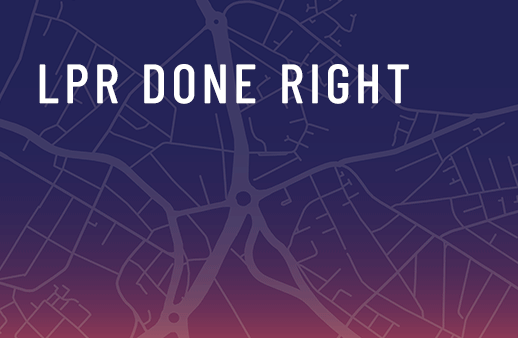–
Financial institutions are navigating a challenging economic landscape shaped by inflation. Even as rates ease from recent highs, the increased cost of essentials continues to strain consumers’ financial stability. This pressure influences borrower repayment behavior and requires collections teams to adapt their strategies to remain effective.
As of June 2025, the U.S. Bureau of Labor Statistics reports inflation at 2.7%, still well below the 6.6% peak in 2022 but notably higher than the 2% average over the past decade. Rising expenses for housing, food and healthcare leave many consumers with less flexibility to manage debt, making collections more complex and critical than ever. According to Forbes, these financial pressures are most severe for lower-income households who must allocate a larger share of their income to basic needs, leaving little room for savings or repayment.
How Inflation Disrupts Collections
Inflation directly influences loan repayment behavior and the effectiveness of collections strategies. Even with stable delinquency rates, the pressure on consumers’ ability to repay creates ongoing challenges. Below are four ways it’s reshaping the collections environment:
- Delinquency pressure remains a concern – According to the Office of Financial Research, credit card delinquencies rose in recent years and remain elevated compared to pre-pandemic levels. Auto and consumer loan delinquencies show similar patterns, reflecting the continued strain on household finances and reinforcing the need for proactive monitoring.
- Essential costs crowd out debt repayment – Rising expenses for transportation, housing and healthcare reduce borrowers’ flexibility to pay debts on time. Collections teams continue to navigate these constraints as payments become harder to secure.
- Delayed payments lose value – Inflation reduces the future value of every dollar recovered. Longer delinquency cycles and shrinking recovery values increase the cost to collect and put added pressure on teams to optimize their approach.
- The risk of inaction remains – Institutions that delay adapting collections processes or modernizing risk falling behind as borrower behavior and economic conditions evolve. Proactive strategies remain critical to maintaining recovery performance.
Inflation’s Long-Term Implications for Lending and Collections
Looking ahead, financial institutions must prepare for continued unpredictability in borrowing behavior and repayment capacity. Researchers at Yale University warn that the United States is on an “unsustainable debt trajectory,” which may contribute to persistently high or rising interest rates in the years ahead. These pressures will only complicate the debt collection landscape, emphasizing the need for agile, forward-thinking strategies.
What Financial Institutions Can Do
To respond effectively, financial institutions must take proactive steps. Below are four strategies to strengthen collections during times of economic uncertainty.
- Educate borrowers – Provide resources that support smarter financial choices including budgeting guidance and debt management strategies. These tools help borrowers build resilience and reduce risk of delinquency.
- Highlight support services – Make it easy for borrowers to understand the financing options and hardship programs your institution offers. Proactive communication builds trust and encourages early engagement.
- Engage in community outreach – Inflation impacts some communities more than others. Offering local support, hosting financial education events or partnering with nonprofits can strengthen borrower relationships and improve retention.
- Prioritize early intervention – Use data to identify at-risk accounts sooner. Early outreach can improve repayment rates and reduce losses caused by inflation’s impact on the value of delayed recoveries.
Inflation is unlikely to return to pre-pandemic levels soon. Interest rates may continue to rise as the United States manages a growing debt burden, which will add new challenges for lenders and collectors alike. Financial institutions that invest in data-driven and borrower-focused strategies will be best positioned to navigate this evolving environment.
With rising inflation putting additional strain on financial institutions, managing delinquency and collections in-house can become increasingly challenging. Partnering with a trusted expert like TriVerity allows your institution to offload these critical functions to specialists who understand how to mitigate inflation’s negative effects helping you protect revenue, reduce costs and maintain long-term financial stability.
By: Ashley Town, VP, Collections Strategy & Transformation, TriVerity
About the Author
Town brings 13 years of experience in strategic planning and leadership, with a strong focus on payment processing and fraud and risk solutions. As vice president of Collections Strategy & Transformation at Velera and TriVerity, she holds strategic accountability across Client Services, Accounting, Compliance, Information Technology and Implementations. Town holds an M.B.A. from Bellevue University and a bachelor’s degree in Business Administration from the University of Nebraska-Lincoln.
About TriVerity
TriVerity, a Velera company, is a full-service first- and third-party collection agency that manages early-stage delinquency, non-performing loans and charged-off loans with a comprehensive menu of collection services. Since 1990, TriVerity has worked with over 2,800 financial institutions nationwide and is a leading industry expert for financial institution collections of all loan types. TriVerity’s broad spectrum of collection resources and training programs help financial institutions manage and mitigate loan delinquency rates. For more information, go to www.TriVerity.com.

The Ever-Evolving Relationship Between Inflation and Collections – The Ever-Evolving Relationship Between Inflation and Collections – The Ever-Evolving Relationship Between Inflation and Collections
The Ever-Evolving Relationship Between Inflation and Collections – Credit Union Collections – Credit Union Collectors – Lending – Triverity – The Loan Service Center












Facebook Comments